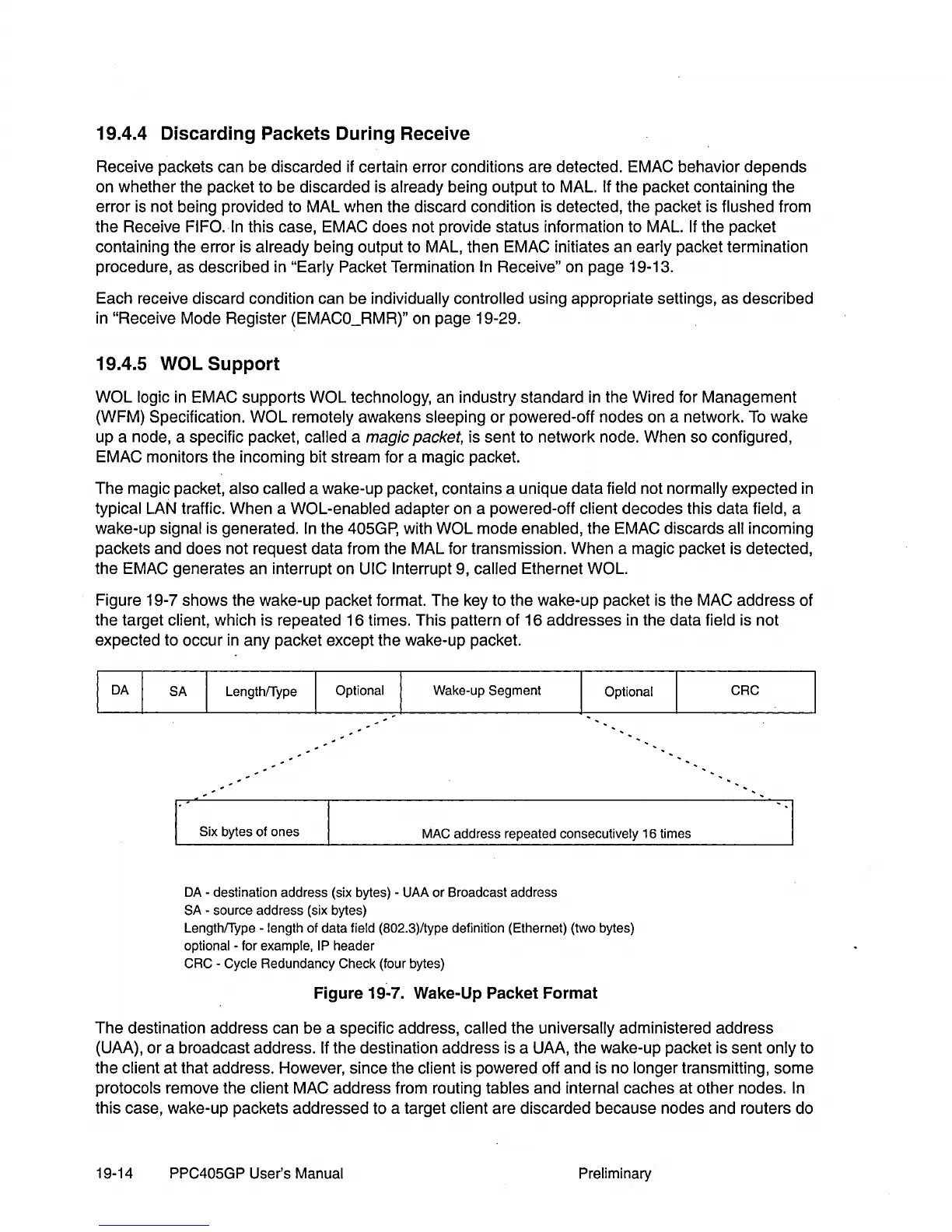19.4.4 Discarding Packets During Receive
Receive packets can be discarded if certain error conditions are detected. EMAC behavior depends
on whether the packet to be discarded is
already being output to MAL. If the packet containing the
error is not being provided to MAL when the discard condition is detected, the packet is
flushed from
the Receive
FIFO.
In
this case, EMAC does not provide status information to MAL.
If
the packet
containing the error is
already being output to MAL, then EMAC initiates an early packet termination
procedure, as described in
"Early Packet Termination
In
Receive" on page 19-13.
Each receive discard condition can be individually
controlled using appropriate settings, as described
in
"Receive Mode Register (EMACO_RMR)" on page 19-29.
19.4.5 WOL Support
WOL logic
in
EMAC supports WOL technology, an industry standard
in
the Wired for Management
(WFM) Specification.
WOL remotely awakens sleeping or powered-off nodes on a network.
To
wake
up a node, a specific packet,
called a magic packet, is sent to network node. When so configured,
EMAC monitors the incoming bit stream for a magic packet.
The magic packet,
also called a wake-up packet, contains a unique data field not normally expected
in
typical LAN traffic. When a WOL-enabled adapter on a powered-off client decodes this data field, a
wake-up
signal is generated.
In
the 405GP, with WOL mode enabled, the EMAC discards all incoming
packets and does not request data from the MAL for transmission. When a magic packet is detected,
the EMAC generates an interrupt on
UIC Interrupt
9,
called Ethernet WOL.
Figure 19-7 shows the wake-up packet format. The key to the wake-up packet is the MAC address of
the target
client, which is repeated 16 times. This pattern of 16 addresses
in
the data field is not
expected to occur
in
any packet except the wake-up packet.
Lengthffype
Wake-up Segment
Six bytes of ones
MAC address repeated consecutively 16 times
DA
- destination address (six bytes) - UAA or Broadcast address
SA - source address (six bytes)
Lengthffype - length of data
field (802.3)/type definition (Ethernet) (two bytes)
optional - for example,
IP header
CRC - Cycle Redundancy Check (four bytes)
Figure 19-7. Wake-Up Packet Format
CRC
The destination address can be a specific address, called the universally administered address
(UAA), or a broadcast address.
If the destination address is a UAA, the wake-up packet is sent only to
the
client at that address. However, since the client is powered off and is no longer transmitting, some
protocols remove the client MAC address from routing tables and internal caches at other nodes. In
this case, wake-up packets addressed to a target client are discarded because nodes and routers do
19-14 PPC405GP User's Manual Preliminary

